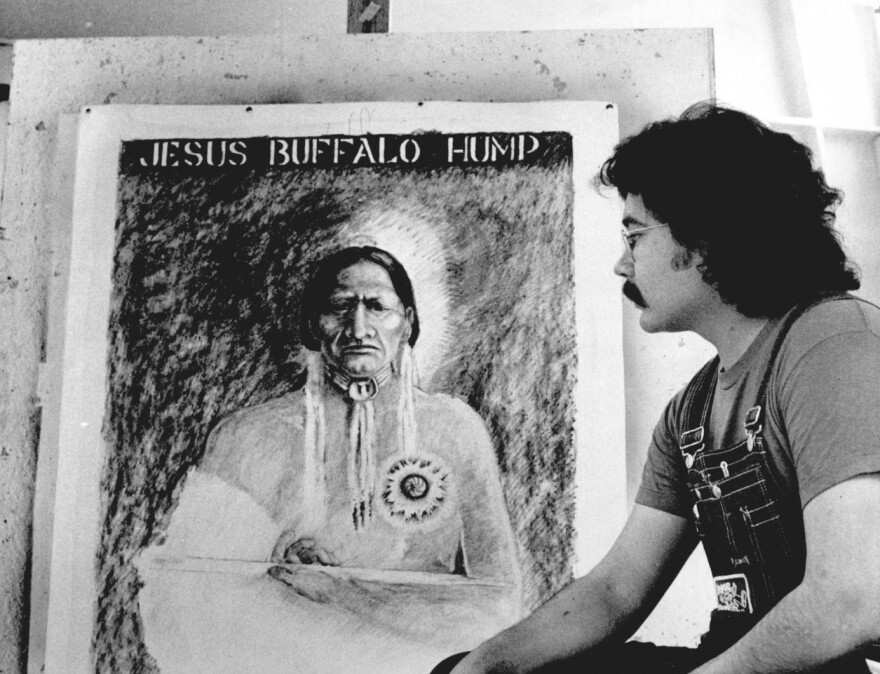T.C. Cannon is considered one of the most talented Native American artists of the 20th century. His skills as a poet, musician and artist ended abruptly in 1978 at the age of 31 after a fateful car crash, yet his large body of accomplishments in a short period of time continue to influence new generations of Native artists.
Cannon’s paintings and sketches used striking color combinations, bold juxtapositions, and artfully portrayed motifs, all deeply rooted in his cultural heritage. “He Who Stands in the Sun” or Pai-doung-u-day is Cannon’s Kiowa Indian name.
He attended the Institute of American Indian Art in Santa Fe in the 1960s where he challenged the parameters of so-called “Indian” art, which was limited by the strict, outdated expectations of mainstream art perceptions. Such art included depictions of Indians on horses, Indians in ceremony, and Indians of an earlier era that fit romanticized mainstream notions.
In contrast, Cannon had his own pop art sensibility, He put traditional images in a modern setting, illustrating his belief that American Indian people maintain their heritage while living contemporary lives. His sharp wit and sardonic humor was a rich element of his art. which he used to tell a deeper story of American Indian history. Although his time on Earth was short, his contributions will continue to shine like the light of the sun.
Some of Cannon's artwork can be viewed on the Heard Museum's website.
This Earth Note was written by Carrie Calisay Cannon and produced by KNAU and the Sustainable Communities Program at Northern Arizona University.








